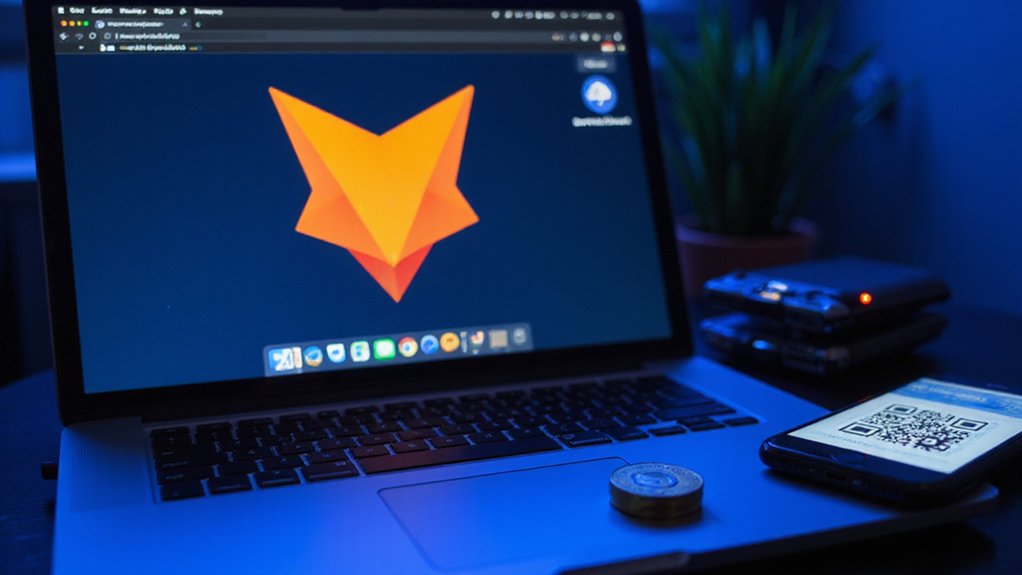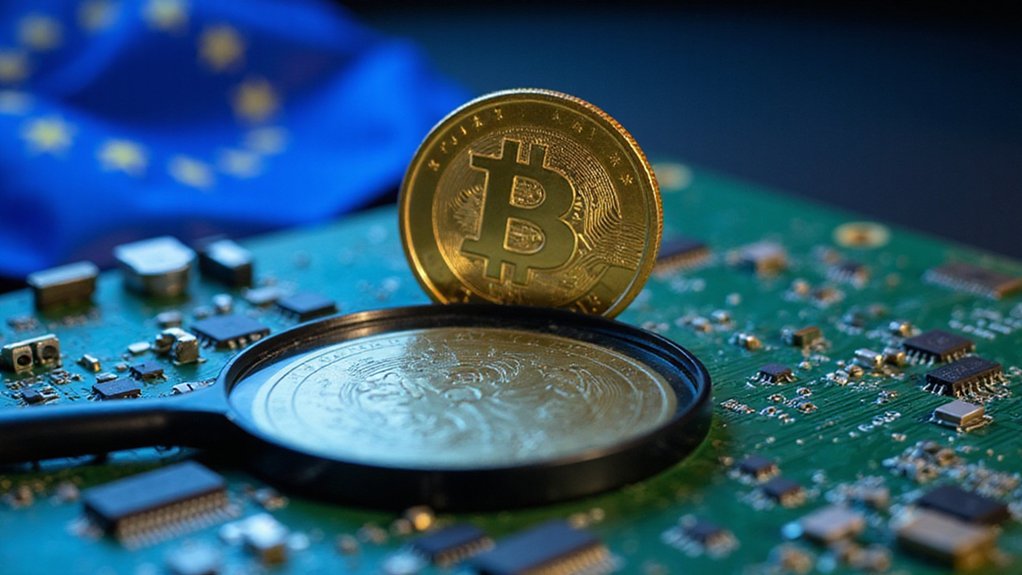Sui revolutionizes blockchain architecture with its object-centric model that enables parallel transaction processing and sub-second finality. Developed by former Meta engineers from the Diem project, this layer-1 platform leverages the Move programming language to enhance security for DeFi applications and NFT marketplaces. The SUI token facilitates transaction fees, staking, and governance participation while maintaining remarkably low costs. This architectural paradigm shift promises to attract mainstream users through accessibility and unprecedented throughput capabilities. The ecosystem’s potential has only begun to unfold.

A revolution in blockchain architecture, Sui represents the vanguard of Layer 1 protocols designed explicitly for the demands of contemporary decentralized applications.
Distinguished by its object-centric data model—a stark departure from traditional account-based structures—Sui facilitates parallel transaction execution, enabling sub-second finality and throughput that would make earlier blockchain iterations blush.
The Narwhal & Bullshark consensus mechanism (surely winning awards for cryptozoological nomenclature, if nothing else) guarantees validation remains both secure and efficient.
What separates Sui from the increasingly crowded blockchain landscape?
Its unrelenting focus on scalability through parallel processing deserves particular attention.
When transactions involve different objects—rather common in complex DeFi operations—they can proceed simultaneously, rather than languishing in the linear queues that plague so many competing networks.
This architectural choice yields immediate dividends: instant finality, high throughput, and transaction costs that don’t require a second mortgage to execute.
The Move programming language undergirds Sui’s smart contract ecosystem, boasting superior security features that mitigate reentrancy vulnerabilities—those pernicious attack vectors that have drained countless millions from otherwise sound protocols.
This foundation makes Sui particularly attractive for DeFi applications, NFT marketplaces, and play-to-earn gaming platforms, where transaction velocity and security remain paramount concerns.
The security and efficiency of Move allows developers to build confidently while experimenting with innovative blockchain applications that were previously too risky to attempt.
The native SUI token serves multiple functions within the ecosystem: transaction fee settlement, staking for network validation (with associated rewards), and governance participation.
Token holders can effectively shape protocol evolution while potentially generating passive income—a compelling value proposition in today’s yield-starved environment.¹
For the next billion web3 users—a population segment persistently referenced in investor decks yet perpetually just over the horizon—Sui’s accessibility and low-cost structure presents genuine advantages.
Whether the platform ultimately delivers on its promise of transformational products remains an open question, but its technical architecture certainly provides a canvas upon which such innovation might reasonably occur.
Sui implements smart contracts that automatically execute predefined actions when specific conditions are met, eliminating the need for intermediaries in complex transactions.
The team behind Sui boasts impressive credentials, with founders from Mysten Labs bringing extensive experience as former Meta engineers who worked on the Diem blockchain project.
¹ Though, as with all staking arrangements, rewards must be weighed against opportunity costs and potential regulatory scrutiny.
Frequently Asked Questions
Is Sui Crypto Environmentally Sustainable Compared to Other Blockchain Networks?
Sui stands markedly ahead in the environmental sustainability race among blockchain networks.
Its delegated proof-of-stake consensus mechanism requires substantially less energy than proof-of-work blockchains like Bitcoin—which consume electricity equivalent to small nations.
Through parallel processing architecture and efficient transaction validation, Sui minimizes its carbon footprint while maintaining scalability.
The network’s partnerships with carbon credit tracking platforms further demonstrate its environmental commitment, though adoption challenges persist despite these eco-friendly credentials.
How Does Sui Handle Network Security and Potential Attack Vectors?
Sui’s security architecture employs multiple defensive layers: a decentralized network paired with permissioned access, the resource-oriented Move programming language (which inherently reduces smart contract vulnerabilities), and a hybrid consensus mechanism combining Proof of Stake with Byzantine Fault Tolerance.
This framework effectively mitigates common threats—51% attacks become prohibitively expensive, DDoS impacts disperse across nodes, and data tampering requires improbable network-wide consensus.
Regular audits and community governance further strengthen its resistance to evolving attack vectors.
What Wallet Options Are Available for Storing Sui Tokens?
Sui token holders can access a growing ecosystem of specialized wallets, with options ranging from the user-friendly Suiet Wallet (boasting 100,000+ active users) to competitors like Sui Wallet, Martian, Glass, and Surf.
For the blockchain-agnostic investor, Nightly Wallet offers multi-chain functionality.
These options provide varying combinations of security features (zero-trust architecture, biometrics), visual interfaces for NFT display, and developer tools—all while maintaining the rapid transaction speeds inherent to the Sui network.
How Can Developers Contribute to the Sui Ecosystem?
Developers can contribute to the Sui ecosystem through multiple avenues: participating in SIPs (Sui Improvement Proposals) to suggest protocol changes; building applications using Move programming language (Sui’s native smart contract language); leveraging the modular architecture to create extensions; and applying for funding through the Sui Grants program.
The ecosystem thrives on community engagement, with developers collaborating on open-source projects while utilizing extensive SDKs, libraries, and documentation—resources that, remarkably, rival those of more established blockchains.
What Partnerships Has Sui Formed With Traditional Financial Institutions?
Sui has established two significant partnerships with traditional financial institutions: a collaboration with 21Shares to expand global network access and drive institutional crypto adoption, and an integration with WLFI that places the $SUI token in their Strategic Reserve.
These alliances (which, remarkably, bridge the chasm between decentralized networks and conventional finance) serve dual purposes—enhancing Sui’s institutional credibility while simultaneously pushing for clearer regulatory frameworks in the still-evolving DeFi landscape.









